STARSHIPS, ASTEROID Mining, and the PIONEERS of the INTERPLANETARY Economy
Starships will enable interplanetary travel by using advanced propulsion technologies to accelerate to the high velocities required to travel between planets in a human lifespan.
Technologies that have been proposed for use in starship propulsion include ion engines, solar sails, antimatter engines, fusion engines, and the theoretical Alcubierre drive, or warp drive. These self-contained vehicles would contain a full life support system for their crew, allowing long term habitation. They would need to act as fully closed ecosystems, utilizing near 100% recycling efficiency for water and air. Large scale food production would require the implementation of hydroponic farming, and stasis chambers would be required to keep crews alive for the long periods of a journey to mitigate the effects of aging. Starships could serve a multitude of purposes for applications of exploration, mining, transport, research, and warfare. They will likely be constructed in orbit at space stations, or starbases, that will act as a docking station for their crew to board from. Starbases will be accessed by smaller ships from the planet’s surface, or by other methods, such as space elevators.

[Image Source]
The rockets that underpin the space programs of today are not very reusable.
They are severely limited in scope because they require massive amounts of fuel to escape the gravitational well of Earth, making them extremely expensive. They suffer from the paradox of fuel range, because for any additional fuel added to the rocket to increase its range, more fuel must be added to accelerate the fuel to orbit velocity. Steps are being taken by rocket producer SpaceX to radically reduce the cost of space travel by improving rocket reusability. By allowing the components of the rocket that are normally single use, such as fuel tanks, to be reused in new launches, launches can be made much cheaper. Cheaper spaceflight has compounding benefits. Every reduction in cost results in new customers being able to afford the technology for more use cases, and the resulting increase in demand allows for economy of scale cost reductions and investments to be made. SpaceX has successfully launched and reused a Falcon 9 rocket booster, marking the first occasion in which a rocket has successfully been reused and landed. However, interplanetary spaceflight that is economically viable will require the development of fully reusable starships that transport passengers from a starbase to their destination.
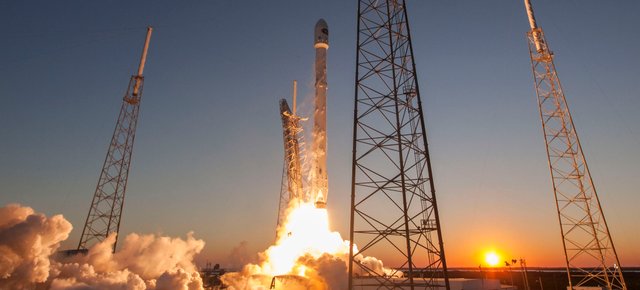
Asteroid mining presents the single greatest opportunity for business development in space.
Asteroids hold vast reserves of minerals, particularly platinum group metals. They also hold large reserves of water, which will be an important asset in space. Water will be needed to replenish all aspects of crew life support systems, and grow food on board. Asteroid mining is an important step to achieving the goal of interplanetary spaceflight, because it will drive innovation to make ships faster, more efficient, and cheaper to operate. It will produce a large profit incentive to develop spacecraft, and will be a major source of private investment. Companies have already been founded to develop asteroid mining technology, such as Planetary Resources, which plans to initially focus on near earth asteroids and has made advancements in using prospecting drones. A single mineral rich asteroid has the potential to contain more platinum group metals than the total that have ever been mined on earth, a yield in the billions of dollars at current market prices. Such projects will require accurate prospecting of asteroids to determine mineral yields, and starships large enough to carry massive payloads of ore safely down to the surface of earth. Alternatively, minerals could be brought to starbases for use in ship construction. Water obtained from asteroids will likely be used to supply starbases for the replenishment of ships between journeys. Ultimately, Asteroid mining will provide a massive return on investment for the first pioneers of starship development.
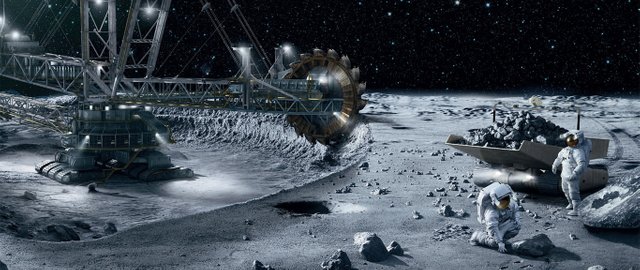
Collaboration between the innovators of asteroid mining and spaceflight technology will be advantageous for both industries.
The return on investment offered by asteroid mining yields will fund advancements in starship propulsion, and demand larger ships to be produced to carry minerals. The vast reserves of minerals and water extracted from asteroids will allow for cost effective starship production and replenishment between journeys. The two industries of asteroid mining and starship construction will be each other’s main customer, and growth in one will spur demand and more growth in the other.
Many technologies have been proposed for use in starship propulsion.
Electrostatic Ion thrusters operate by accelerating ions of a gas, typically xenon, fuel through a voltage potential difference. The craft is slowly accelerated by conservation of momentum, with low thrust on the order of 25 to 250 millinewtons. Electromagnetic ion thrusters utilise an electric field to ionise a gas into a plasma, which closes a circuit and allows current to flow through the gas. This current generates a magnetic field, which produces thrust using the Lorentz force. Ion thrusters are currently used on satellites and probes for orbital adjustments, but are not well suited for starships, due to their very low thrust. The VASIMR (Variable specific impulse magnetoplasma rocket) design is in development, and uses radio waves to superheat and ionize a gaseous propellant, and then accelerates it using magnetic fields to generate thrust. This allows for a much higher thrust to be produced. Any kind of starship engine will require exorbitant amounts of energy to power it, with a high fuel energy density to ensure that it does not add too much mass to the ship.

Generating energy for starship engines will be no small feat.
Nuclear fission reactors that are in use in plants today could be used, and would store viable fissile material to fuel the reactor for the duration of their journey. Nuclear fission however does not produce energy as efficiently as other means. Fusion reactors operate by taking two light nuclei, such as hydrogen, and heating and compressing them using magnetic fields. The nuclei overcome the repulsive forces between themselves, and release a large amount of energy when they fuse together. More efficient antimatter reactors have also been proposed for delivering the massive amount of power required by thrusters. They operate by reacting matter with antimatter, which annihilate each other and release immense amounts of energy. This technology would require a method for producing or obtaining and storing antimatter in a way that is energy positive. However, no matter how much energy is used to accelerate a ship using conventional engines, the effects of relativity will cause the mass of the ship to increase exponentially, preventing it from breaking the speed of light. This makes reaching even the closest stars a multiple year journey.
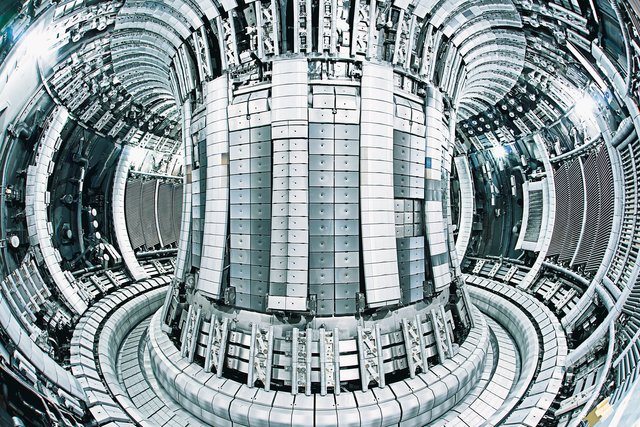
The speed of light remains a problematic barrier to interstellar space travel.
Relativistic effects cause the relativistic mass of an object to increase with its velocity asymptotically as it approaches the speed of light. This means that as you add more energy to accelerate a ship, it will require even more energy to continue accelerating. The amount of energy required to accelerate an object to the speed of light approaches infinity. For this reason, non-conventional methods have been proposed to move faster than the speed of light. The theoretical Alcubierre drive operates by creating a region of distorted spacetime around the ship, by contracting the space in front of the ship, and expanding the space behind the ship to move, without having a velocity through space. Using this system, space would warp around the ship, instead of having the ship move through space. This device and technology is highly speculative, but if successfully implemented could hold the key to interstellar travel.
The types of starships produced by manufacturers would be as various and multi purposed as cars are today.
Passenger transport ships, called Star Liners, would be designed for comfort and speed. They could utilise rotating habitat shells to produce artificial gravity through centripetal force. Like airliners, they would be engineered to hold as many people as possible as cost effectively as possible. They would have on board amenities to support passengers for long duration voyages. Rapid transit ships, called Star cruisers, would be designed for speed. They move important cargo and passengers between starbases rapidly. They would sacrifice energy efficiency and cost effectiveness to offer superior speed and to reduce the long transit times between planets. Mining barges would be used to haul massive amounts of ore mined from asteroid fields back to a starbase for use and refining. They would be built to have massive cargo holds, and sacrifice speed for operating cost efficiency. Scientific research vessels could be small ships with specialised crew members that conduct surveys of stellar phenomena. They would be equipped with powerful telescopes, sensors, probe launchers, and on board supercomputers. Ultimately, a diverse ecosystem of starships will develop to service every possible purpose and market niche.
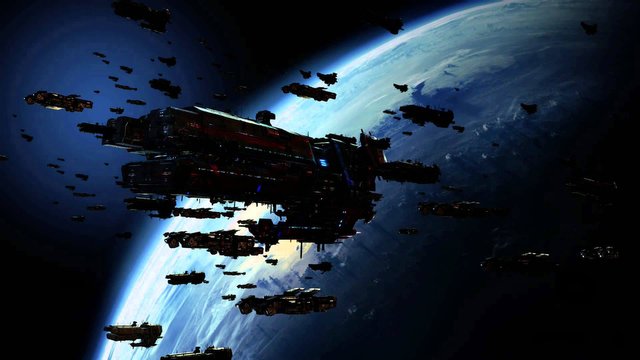
Mining will be a critical market for starship manufacturers.
Asteroid mining companies will manage fleets of ships to prospect asteroids for ore, extract ore from identified rich deposits, then use mining barges to transport the minerals back to a starbase for processing. Advanced mining techniques will be used to extract minerals with a high energy efficiency to minimise costs. Plans for extracting water from asteroids involve surrounding the asteroid with a container, then heating the container up from the outside. The water melted off the surface of the asteroid will accumulate on the edge of the container. Minerals could be extracted by using small explosive charges to detonate chunks of the asteroid away, where they can be captured by a mining barge, and stored for transport. Drones could be deployed to drill for ore, and return to a ship with their payload of mineral rich ore. This would make for a more focussed but time consuming approach. Another possible technique could involve containing an asteroid, and detonating an explosive device within the container to fragment the entire asteroid. Magnetic fields could then be used to separate varying metals according to magnetic properties, and capture them for extraction onto a mining barge. This kind of mass scale mining for minerals from asteroids could unlock vast supplies of resources for use both on Earth and in space, and generate unprecedented profits for the businesses undergoing mining operations. Asteroid mining would have massive economic benefits for everyone on Earth. Platinum, Palladium, Rhodium, Iridium, Ruthenium, and Osmium, are used in catalytic converters, electrical contacts, laboratory equipment, electrodes, and dentistry equipment. The expansion in supply would result in an order of magnitude cost reduction for the platinum group metals, which are used extensively in consumer electronics. The minerals obtained from asteroid mining more likely to be used in space to assemble starships at starbases, where the demand for high grade metals will be immense. Asteroid mining will be essential to obtaining the resources necessary to build starships.
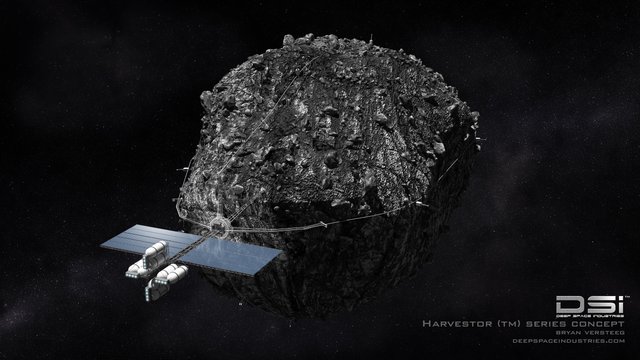
Space travel comes with many serious risks.
Starships would by design be incredibly complex machines, and any small malfunction has the potential to cause a failure in the engine or fuel storage containment, detonating the entire ship. Even small non-fatal engine failure could leave crews stranded in deep space for extended periods of time until they can be rescued. Life support failure or hull breaches could kill all crew members from eventual asphyxiation. A dangerous possibility exists that a solar flare could occur, and emit a radiation pulse that would kill all inhabitants of a starship. The ways to die in space would be various, and we are probably completely unaware of most of them at our level of technological understanding. Starships would have to be iteratively designed, with excruciating precision. All components would have to be rigorously tested, and crew members would have to be highly trained, resourceful, and have strong improvisational awareness. Starship design should include mechanisms to contain and isolate hull breaches, and if needed separate into functional sub sections. Asteroid mining would create more dangerous possibilities, especially any technique involving explosives. Mistimed detonations could be deadly, or cause destruction to expensive mining equipment. The human risks of asteroid mining would be largely alleviated by using drones to contact the asteroid, and operate mining processes. The mining barge crew would be located a long way away from any operations, and only pass by to collect ore once the extraction is complete. Space will never be safe for anyone involved, and casualties along the path of progress to interstellar travel will be a fact of life.
It is imperative that Humanity becomes a multi-planetary species.
Starships and Asteroid mining will be necessary for the expansion of the human race to other worlds, a vital effort that is key to our long term survival. The risk of a planetwide catastrophe occurring, such as a meteor strike, poses an existential threat to humanity. If we were populated on multiple planets, it would be possible to rebuild civilization from the inhabitants of other planets after the catastrophe had subsided. Measures to expand to other planets however should not be done at the total expense of efforts to maintain Earth from environmental collapse, or protect it from meteor strikes. Detection and deflection of incoming meteors is an essential part of our long term survival on Earth, and is just as important as expanding out to other worlds. We should not forget to protect what we already have to grasp at the new and unknown. Human colonization efforts should take a parallel priority with the protection of Earth.
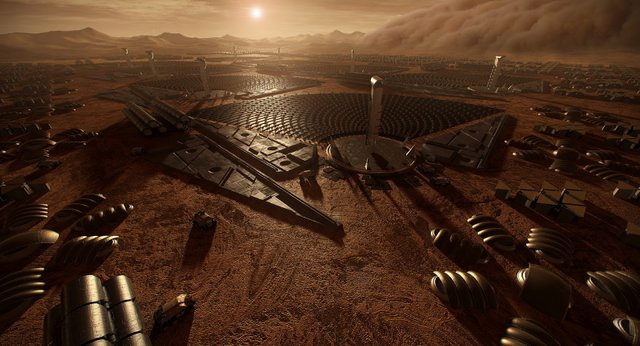
The starship construction and asteroid mining industries will build the backbone of the economy of the future.
Private and public investment in space programs will be provide massive benefits to the economies of the world. The technology and innovation developed for space travel will provide advancements in all aspects of life. Energy generation technologies needed to power starships could just as well be used to power cities on Earth, and technologies used for efficiently producing food in space will advance farming techniques on the ground. The pioneers of the interplanetary economy will build vast companies to provide goods and services to the inhabitants of starships, colonists of nearby planets, such as Mars, and the residents of starbases. Fortunes stand to be made in the wake of the first successful asteroid mining payloads, as prices will be highest for the first to market. Starship manufacturers could make large profits selling ships to governments, mining companies, colonists, and eventually, space tourists. The first multi-planetary corporations will be born in the coming decades, and some of them might already exist. Vast swathes of land on other planets stand to be claimed, and developed for new colonists. Humanity must bravely expand into the unknown, just as we have always done. The new frontier of Interplanetary expansion will be dangerous, exciting, and lucrative. The real space race is yet to begin. To the victor, the spoils of new worlds and the critical foundation of the new interplanetary economy.

Sources:
Previous Articles:



What do you think:
Yes - We should expand to new planets and mine asteroids for minerals.
Very cool! Brought back memories of my time on EvEOnline!
I was once a borderline radical in terms of sustainability, returning to nature .. limiting population so as to limit the impact on Mother Earth .. and so on. Now it has become clear that there is no going back, that the planet is very likely dying already, and the process will only accelerate. In the longer-term, a fact that many environmentalists do not wish to face, is that this planet is ultimately doomed, as are all planets ... we are not going to be on this rock forever, so we best get our asses-in-gear, and start spreading our seed as far and as wide as we possibly can, as quickly as we can.
What do you think:
No - We should focus on protecting Earth from environmental damage and global warming before we worry about other planets
Very small number of people realize the truth – planet Earth is our Spaceship! Late Douglas Adams was one of them. We still can't accept that because we can't steer it's course, but if we want a space travel, Solar system is a role model for construction one Spaceship that could reliably endure all the dangers… Everything else is just fantasy.